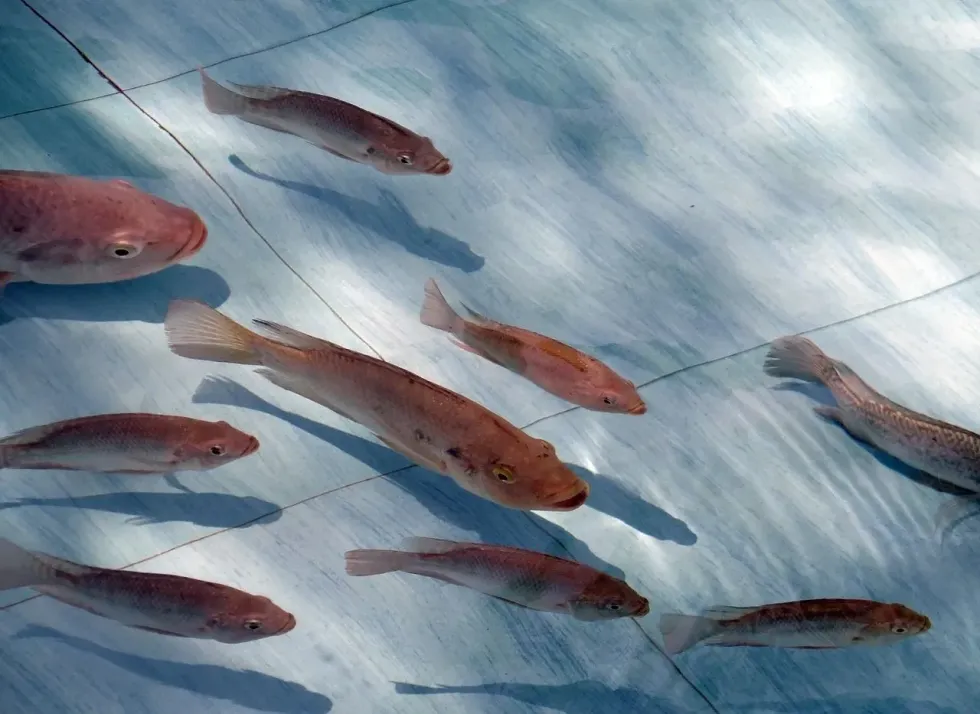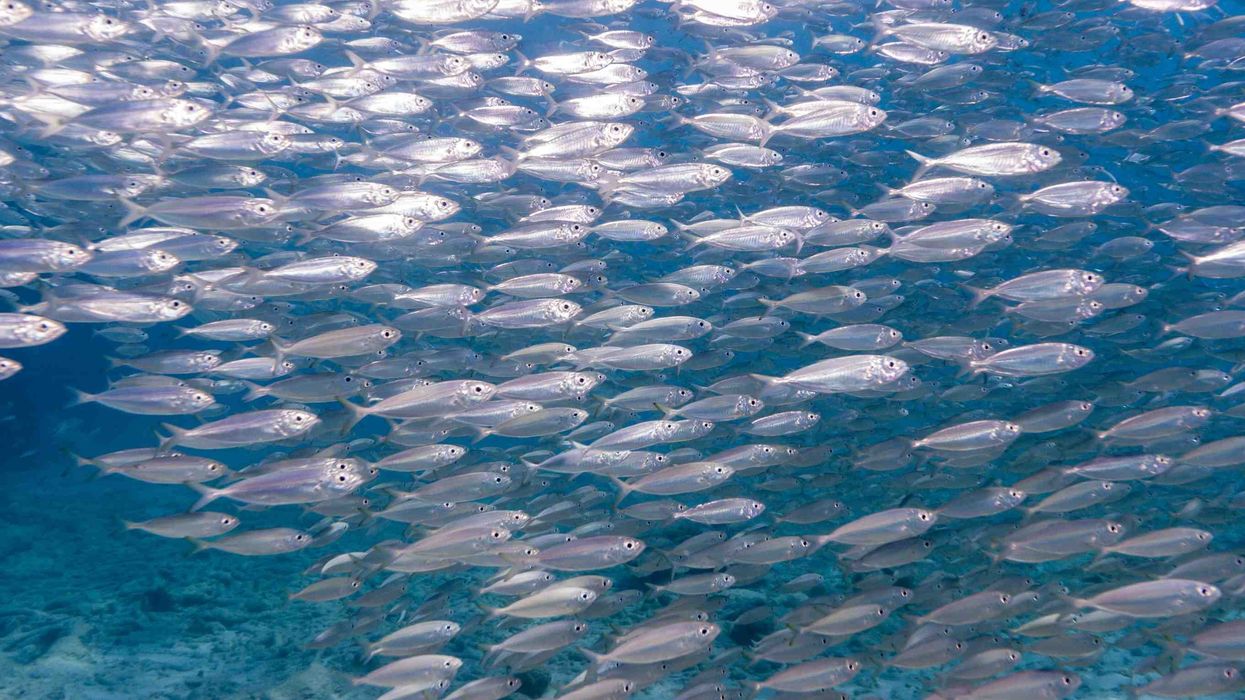The tilapia is also known as the St. Peter's fish. It belongs to the family Cichlidae and is a freshwater fish that is native to the Nile region in Africa.
It is the fourth most eaten food fish in the U.S after tuna, salmon, and Alaskan pollock. They are abundant in fatty acids and is a lean source of protein and have a mild flavor.
Hence they are extremely popular with seafood lovers who love to fillet and bake it. A number of tilapia farm sites have been set up all over the world. Selective breeding of these fishes is conducted in dedicated tilapia farms but raising tilapia in cramped conditions can result in disease and overcrowding.
Farmed tilapia are sold at reasonable prices for various purposes such as eating, cleaning water sources. The tilapia fish suffer from diseases such as streptococcus and should be cooked properly before consumption.
As Tilapia fish is rich in protein, has a great taste along with a complex nutrition profile, this fish is in great demand amongst seafood lovers. As a result, Tilapia farming is conducted on large scales across the world to cater to the demand of this popular seafood delicacy.
More and more people are interesting in learning tilapia recipes, to be able to enjoy this seafood delicacy more.
Here are some interesting facts about the tilapia fish for your perusal. For more relatable content, check out these pacific cod facts and giant trevally facts for kids.
Tilapia Interesting Facts
What type of animal is a tilapia?
A tilapia is a freshwater fish. Extensive farming of these fishes occurs due to their ability to clean unwanted vegetation. Tilapia is a versatile and inexpensive fish species, that is farmed in huge numbers across the world.
What class of animal does a tilapia belong to?
A tilapia belongs to the fish class of animals. They are a great food source for humans residing near coastal regions where people love serving the tilapia fillet in the dinner.
How many tilapia are there in the world?
There are more than six million tilapia fish in the world and their numbers continue to increase as tilapia farming is being conducted at dedicated tilapia fish farms. As a matter of fact, it is one of the most farmed fish species in the world.
Where does a tilapia live?
A tilapia can be found in freshwater bodies. This species are bred in tilapia farming sites too. Tilapia is now banned in Australia under the Biosecurity Act as this species was posing a threat to Australia's native biodiversity.
What is a tilapia's habitat?
A tilapia's habitat consists of warm waters. A purebred tilapia fish cannot survive below the temperature of 44.6°F (7°C). This fish species is unable to survive in cold waters. They are found in freshwater bodies such as ponds, brackish water, shallow streams, lakes, rivers. They live where their diet can be satisfied.
Who do tilapia live with?
Tilapia live with fishes of their own species. Some juveniles have the tendency to eat small fishes hence they don't live around them. Their ecosystem also consists of catfish, barbs.
How long does a tilapia live?
A tilapia fish has a lifespan of up to 10 years when suitable living conditions are provided.
How do they reproduce?
The tilapia breeding season occurs every 3-4 weeks. The males dig holes in the bottom of the water bodies to act as nests. These nests are not built below 3 ft (91.4 cm) from water level.
After mating females spawn their eggs in these nests. Males then fertilize them and females accept and collect the fertilized eggs in their mouths. They carry their fertilized eggs in their mouths until they hatch.
What is their conservation status?
The conservation status of tilapia is that of Least Concern as the population of this species is steady across the range of habitat as well as in fish farms. As the farming for tilapia is being conducted on a massive scale, their population needs no special conservation efforts at present.
Tilapia Fun Facts
What do tilapia look like?
Tilapia have a deep body that is laterally compressed. They have two sets of jaws and pharyngeal jaws. Their teeth are conical in shape. The lateral line of the tilapia breaks near their dorsal fin and starts again in two or three rows of scales.
How cute are they?
Tilapia is not cute. They have an ugly, slimy body which is not attractive. But they are kept in ponds to act as cleaners of vegetation.
How do they communicate?
Fish tilapia communicate through gestures such as swimming patterns, school formations. They can also detect and secrete pheromones that travel through the medium of water.
How big is a tilapia?
A tilapia is a small to medium sized fish. They can grow in length up to 24 in (61 cm). There are some wild species that grow to be longer, depending on the living conditions available.
How fast can a tilapia swim?
The speed with which the tilapia can swim is not certain . Biologists are constantly making observations and collecting more data about this species.
How much does a tilapia weigh?
Tilapia weight range is around 2 lb (0.9 kg). Though many weigh only a few ounces. These wild fishes are baked in an oven to serve as food. Parrot fish is 20 times bigger than tilapia.
What are the male and female names of the species?
No specific names are assigned to the males and females of the tilapia species. They are known as males and females respectively.
What would you call a baby tilapia?
A baby tilapia is called a fry.
What do they eat?
Tilapia adults are vegetarian fishes. These wild fishes feed on duckweed, filamentous algae and their diet sometimes contain mosquito larvae. But the juveniles have a taste for small fishes along with the adult diet.
Are they dangerous?
The wild tilapia is not a danger to humans. They simply eat vegetation grown in tanks. While having a tilapia meal humans should keep a check on their portion size. Tilapia contains a lot of omega 3 fatty acids, even more than cod.
Fatty acids are not good for human health. And they also contain proteins. Also, they might be infected with diseases such as streptococcus.
Would they make a good pet?
The tilapia has exceptional breeding potential. If you keep male and female tilapia in a single tank, very soon you will face the problem of overpopulation. Juveniles will eat any other small fishes you combine them with. In addition to that, any vegetation in the tanks will also be destroyed. Hence, the tilapia do not make good pets.
Did you know...
Males can be distinguished from females by a tapered shape below their anus where females have a round shape.
Tilapia has a record of being the fourth most consumed fish in the U.S. after tuna, salmon, and Alaskan pollock.
In Egyptian art, tilapia is a symbol of rebirth.
Due to the high mercury content, the king mackerel is regarded as the most unhealthy fish to eat.
Amazing tilapia recipes such as tilapia fish tacos are cooked from tilapia fillets, and also grilled tilapia and fried tilapia and tilapia cooked in the oven by brushing fillets with hot oil. These are served as dinner with lemon sauce, garlic sauce, tomato sauce. The right temperature to cook this fish is 293 °F (145 °C).
What type of fish is tilapia?
The tilapia is an invasive species of fish. Their population grows very quickly and they take over the entire water body leaving very little space for other species. While tilapia is a real fish, many breeders are now creating genetically improved farmed tilapia to create stronger and better tasting fish.
How many calories in tilapia?
The tilapia nutrition facts tell us that tilapia has very few calories. On average, 3.5 oz (99.2 g) of tilapia serving has around 128 calories.
Tilapias are an excellent source of protein and nutrients which is good for health. A 3.5 oz (99.2 g) oven cooked serving has 0.91 oz (25.8 g) of protein. They are abundant in omega 3 fatty acids.
They have a mild flavor and they do not taste much like fish. Serving tilapia steak in dinner is popular in various coastal regions as it reduces the risk of heart disease.
Here at Kidadl, we have carefully created lots of interesting family-friendly animal facts for everyone to discover! For more relatable content, check out these king salmon facts and hogfish facts pages.
You can even occupy yourself at home by coloring in one of our Tilapia Coloring Pages.









